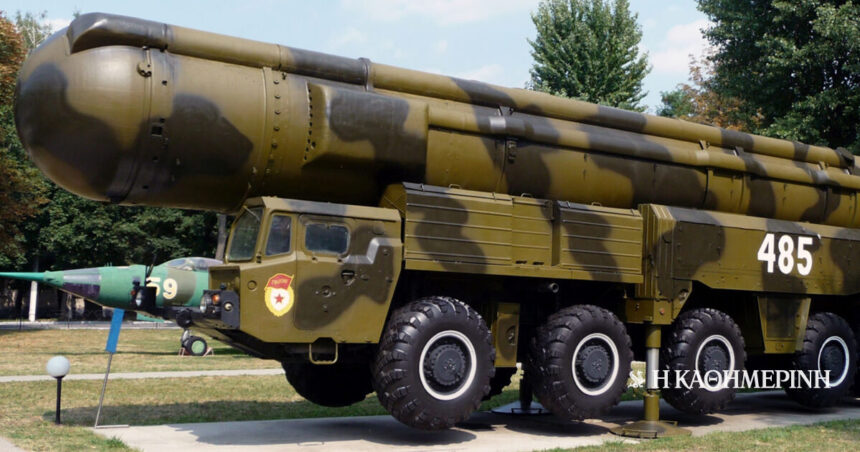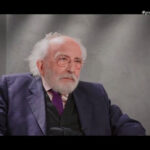In the early 1980s, relations between the two superpowers – the US and the Soviet Union – as well as the two political -military coalitions that were led by (NATO and the Warsaw Pact) were extremely strained. The constant deterioration of American -Soviet relationships was fueled, in addition to geopolitical and ideological competition, by mutual distrust and the feeling of fear and anxiety about sliding – from intention or wrong calculation – in a nuclear war. Acute rhetoric and aggressive propaganda further burdened the already burdened climate. Since 1981, US President Ronald Reagan has inaugurated tactics of psychological warfare and pressure on the Soviet Union, while the Soviets attempted to undermine NATO’s strategy and cohesion, supporting Underground Nuclear -Pacific and Pacific Movements.
Developing new nuclear weapons
A key point of confrontation between the two superpowers was the nuclear strategy, as each side was trying to secure superiority. The issue of so -called “Europhara”, that is, the competition of the two superpowers in the field of nuclear weapons and mid -range, armed, designed for attacks on the European continent, had emerged. First, the Soviets had begun in 1977-78 to replace older such rockets as the much more sophisticated SS-20s, which were able to hit targets in Western Europe accurately and multiple nuclear heads. As this caused a strong concern in NATO, that the nuclear balance at the level of medium rockets and intermediate range would be distributed, the alliance adopted the “double decision” of December 1979, which gave the green light to the placement, to the placement. , of the new American rockets Pershing II and Cruise, in response to the threat of SS-20s. That decision left a time limit on negotiations between the superpowers, hoping to reach an agreement on the basis of the withdrawal of the SS-20s and the cancellation of the development of Pershing II and Cruise. In the event of the inability to find a diplomatic solution, the new US missiles would arrive in Western Europe in the autumn of 1983.
The Soviet political and military leadership has taken on the forthcoming arrival of the new US missiles Pershing II and Cruise in Western Europe as a particularly serious threat to the security of the Soviet Union.
Given the reluctance of the Soviets to seriously discuss such a solution and the consequent inability to reach an agreement between the two superpowers on the issue of “Europhara” at the given context, in 1983 it was a year of extreme cold war. Indeed, the climate was further burdened by individual episodes, such as the downfall of the South Korean passenger flight KAL 007 by Soviet fighters and the US invasion of Grenada. Most importantly, however, the Soviet political and military leadership took the forthcoming arrival of new missiles in Western Europe as a particularly serious threat to the security of the Soviet Union.

Soviet concerns
PERSHING II, due to their precision and very high speed, and the Cruise, due to their large range and difficulty detecting them, were a deadly combination: Cruise could unnotic From Pershing II, who in a matter of minutes could hit goals in Soviet territory before the Soviet Union responds. That is, the Soviets were afraid that the United States had a very serious advantage in the nuclear equipment race, with the possibility of exhaustion of a first-strike capability with a relatively small risk of a direct-at least symmetrical, European Theater- Answer. Also, that these sophisticated missiles could be used for surgical “decapitation” of Soviet political, party and military leadership with nuclear weapons.

Although exaggerated, these fears were declared the way the Soviet regime faced the arrival of the new US missiles: it was considered an attempted bullying, but also indicative of US and NATO intentions to adopt a much more aggressive nuclear strategy. This fear was reinforced by the fact that the Soviet air defense and early warning system had serious technological weaknesses. In response, the Soviet Union, on the one hand, reinforced the readiness of its nuclear forces, on the other hand mobilized its spy networks and put all its Soviet and Allied Information Services on the war, preparing a giant information business: or Rian), aimed at detecting any evidence that would indicate that a surprise nuclear attack of the West was imminent. It was in this environment of extreme Soviet insecurity and suspicion, as well as reaction readiness to any nuclear blow in the West, which took place by Able Archer 83.

An exercise with extremely realistic character
The Able Archer 83 was conducted by NATO in November 1983 to simulate the stages of escalating a nuclear war. That is, its aim was to simulate the process of transporting and managing nuclear forces under crisis. It was an annual exercise aimed at preparing the Western forces for a possible nuclear conflict, but in 1983 the general climate that prevailed and the way and conditions of conducting its exercise gave it an extremely realistic character, causing particular concern to the Soviet Union. NATO proceeded with virtual processes of transport and dispersed and handled nuclear heads and, in general, particularly realistic movements involving the obstacle of a nuclear crisis or conflict (such as the transfer and dissemination of non -armed nuclear heads at various points in West Germany and Germany. commands for nuclear blowing). At the same time, US aircraft carried out exercises for loading, transporting and removing nuclear weapons, even carrying realistic nuclear head models. It should be noted that Able Archer 83 was one of the many (at least six) exercises conducted by NATO in the fall of 1983 under the “umbrella” of the wider Autumn Forge 83, which resembled a war in Europe between NATO and NATO and of an opposing coalition (the “orange pact”).

Risk of sliding in a hot episode
Although Able Archer 83 was completed without further incidents, there were soon rumors and leaks about the Soviet stance and estimates that the Soviet leadership, seeing NATO’s preparations, worked that the exercise could be a cover for a sudden attack. Shortly before and during the exercise, Moscow ordered the dispersion of the Soviet nuclear forces, put the Soviet nuclear and other military forces in alert and further strengthened the opponent’s monitoring activities. The Soviet and other information networks of the Warsaw Pact were closely monitoring NATO’s movements, trying to identify signs of an impending attack. Increased Soviet concern and nervousness significantly increased the risk of a single nuclear incident (such as an unauthorized use of nuclear weapons) or sliding in a more extensive nuclear exchange, with unpredictable consequences for peace in Europe and in Europe. However, one of the key questions that have already arisen from earlier and for which modern research has not yet managed to give a definitive answer, to what extent the Kremlin has actually interpreted the exercise as NATO’s possible preparation for a surprise nuclear war, or If the Soviet phobias were, to a large extent, another aspect of the Soviet anti -nuclear propaganda and the attempt to manipulate the West. It is difficult to draw a clear and definitive conclusion, as many Soviet documents of the time remain confidential and not a sufficient number of archival documents have been found that fully confirm (or deny) one or another.
NATO has transported and dispersed non -armed nuclear heads to various points in West Germany and a simulation of transmission of orders for nuclear blows.
What is certain is that the Able Archer 83 exercise and in general the developments of 1983 have shown that the escalating nuclear equipment to achieve supremacy, misunderstandings and lack of confidence between the two superpowers could have devastating effects. The need to secure sufficient nuclear deterrence (as each superpower and the corresponding alliances perceived it) against the opponent led to practices that could easily be misinterpreted as preparations for attack, rather than as defense -balance measures. Thus, even the Reagan Presidency acknowledged the need to avoid additional tensions to avoid the worst. Following the rise to the leadership of the Soviet Union of Michael Gorbachev in 1985, both superpowers showed the cooperation and building of mutual trust relations to promote nuclear equipment reduction measures. At the end of 1987 the Treaty on the Inf Treaty nuclear forces was signed. Under this treaty, the two superpowers put a definitive end to the nearly ten-year “crisis of Europe”, adopting the “zero solution”, namely the destruction of medium nuclear weapons and mid-range (SS-20, Pershing II, Cruise) and the prohibition New similar systems in Europe.
It was shown that escalating nuclear equipment to achieve superiority, misconceptions and lack of confidence between the two superpowers could have devastating effects.
*Mr. Dionysis Hourhoulis is an assistant professor in the Department of History of the Ionian University.
Curated by: Evanthis Hatzivasiliou







